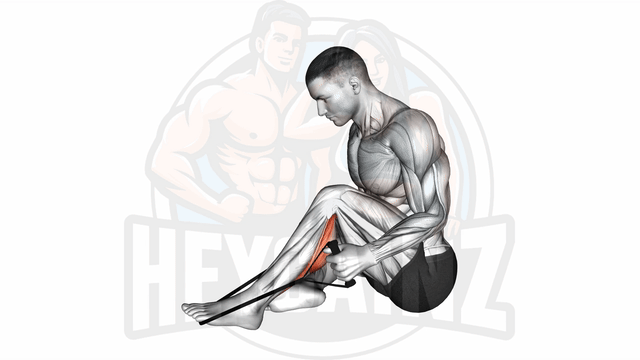
Instructions:
- 1Stand upright on a flat surface
- 2Shift weight to one foot
- 3Lift the other foot's heel off the ground, keeping the toes in contact with the surface
- 4Gently push down on lifted foot's toes to enhance the stretch
- 5Alternate feet and repeat
Tips:
- Perform the exercise slowly, and don't overdo the stretch
- Breath normally when performing the stretching
- Always keep a slight bend in the knee of the standing leg to prevent hyperextension
- If you can't balance properly, use a wall or a chair for support
Peroneals Stretch: Enhance Your Calf Flexibility
The Peroneals Stretch is an effective exercise designed to target the gastrocnemius muscle in the calves. This stretch is crucial for preventing injuries and improving overall flexibility, especially for those who engage in activities that put considerable strain on the lower legs. Whether you are an athlete or someone looking to improve mobility, incorporating peroneal stretches into your routine can yield significant benefits.
This exercise requires no equipment and can be performed virtually anywhere, making it versatile and accessible. It’s important to perform peroneal stretches with proper technique to maximize effectiveness and minimize the risk of strain.
Benefits of the Peroneals Stretch
- Increases flexibility in the calves
- Helps in the rehabilitation of peroneal nerve injuries
- Can alleviate tightness and discomfort in the lower leg
- Enhances overall performance in physical activities
How to Perform the Peroneals Stretch
To execute the peroneal stretch effectively, follow these simple steps:
- Begin by standing upright. If you prefer, you can also perform the stretch while seated on the ground for added stability.
- Slowly lean forward, keeping your back straight, until you feel a gentle pull in your calves.
- Hold this position for 15-30 seconds, breathing deeply to facilitate relaxation.
- Release and repeat for 2-3 sets, ensuring you feel a comfortable stretch without pain.
Tips for Effective Stretching
To enhance your experience with the peroneals stretch, consider the following tips:
- Warm up: Always warm up your muscles before stretching to improve blood flow and flexibility.
- Use a strap: For a deeper stretch, you can use a strap or towel to assist in pulling your foot further towards your body.
- Listen to your body: Avoid pushing yourself too hard; the stretch should feel good, not painful.
- Consistency: Incorporate peroneal stretching regularly into your workout routine for best results.
Whether you refer to it as a peroneal stretch standing or a peroneal stretch with strap, the key is to embrace the benefits this simple yet effective exercise brings to your lower leg health. Adopting these stretches into your fitness regimen can be a great way to maintain the health of your peroneal nerves and support recovery from any strain you may have experienced.